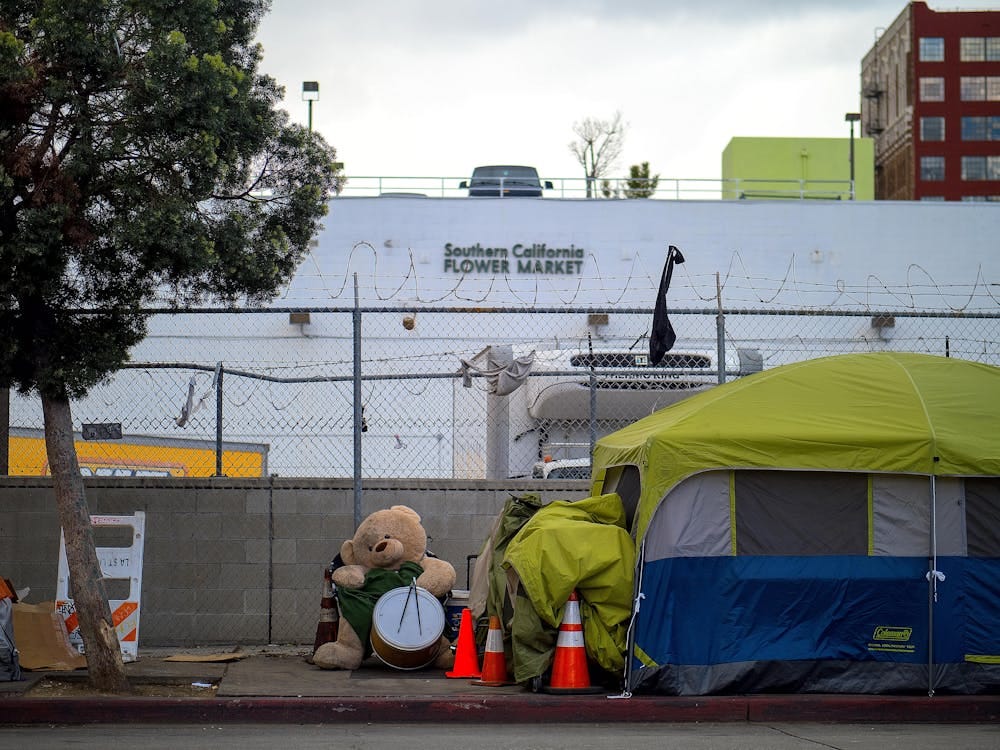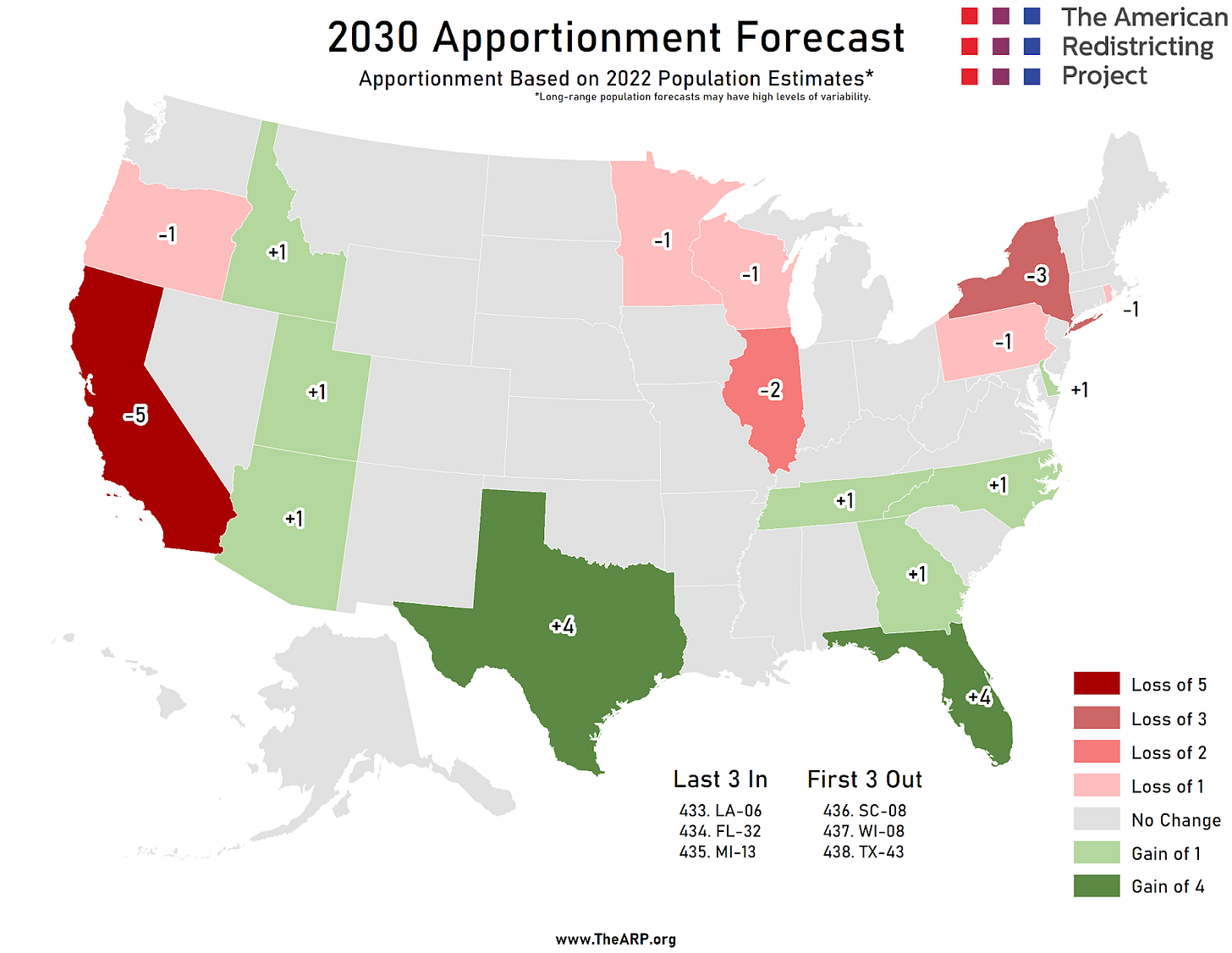California’s Do-or-Die Legislative Session
Democrats Don’t Have Another Year to Dilly-Dally on Housing.
Working in America’s largest blue state—and having done a lot of work in red states—I’ve been struck by the lack of urgency among some Democrats.1
Let’s take stock: The Democratic Party just lost one of the most important elections of a generation. They didn’t just lose the presidency; they also lost both chambers of Congress. Republicans enjoy trifecta control of nearly half of all U.S. states.2 They are actively remaking the federal government along conservative lines, and filling the federal courts with judges who will permanently lock in their preferences.

Why has this happened? Not because normal Americans are deeply concerned about DEI programs, or are eager to acquire Greenland. It happened, in part, because the cost of living skyrocketed under a Democratic administration. More to the point, it happened because normal Americans look to California and see a state that is a bit of a mess on the kitchen table issues that win and lose elections.3
My parents are a sort of microcosm of suburban American politics: My father is a diehard MAGA voter. My mother is the prototypical resistance wine mom. In general, they’re pretty evenly matched in debates. But my dad can always activate a trap card when the debate isn’t going his way: “Yes, but just look at California,” usually with a knowing glance my way. Thus ends the debate.
It isn’t just vibes. Since the 1990s, California has been a major net loser on domestic migration. For years, our population growth depended on huge influxes of international migrants. But as of 2020, even that isn’t saving us—the Golden State is now losing population for the first time. With the Trump Administration working to curtail international migration, California’s population stagnation is escalating into decline.
These people aren’t fleeing California’s perfect weather, strong job market, or stunning national parks. They’re fleeing because they can’t afford to buy a home or make rent here—a modern exodus to the desert that has turned Las Vegas and Phoenix into the fastest-growing cities in the nation.4
In the waning days of the 2024 election, Trump never failed to tie Kamala Harris to California. It was a critique that required no elaboration, and one that hurt downballot Democrats who had nothing to do with California. By now, most Americans have a neighbor, family member, or coworker who was priced out of California, and probably doesn’t have much nice to say about it.
Beyond casting a pall over Democratic candidates, the mass exodus out of California puts Democrats at a deepening electoral college disadvantage. Estimates vary, but the most dire predictions have solid blue states losing 12 votes. And again, with the Trump Administration set to massively curtail the international migration needed to drive blue state net population growth, I would go with the dire prediction.

That is the equivalent of Democrats losing Arizona in 2032, no matter how hard they campaign.5 Democrats spent something on the order of $50 million, and many hundreds of thousands of man-hours, trying—and failing—to win the state in 2024, suggesting that they would do some pretty big things to avoid that happening.
In the best-case scenario, Democrats will lurch to the right and reclaim the median voter. In the worst-case scenario, they will just keep losing.
“Yes, yes,” I can hear partisans furiously commenting. “There will be a recession, and we will win in 2026. And there’s plenty of time to turn the ship around by 2030.” But is there?
Reversing California’s population requires that the state build something on the order of five million new homes between now and 2030. Right now, that isn’t happening. Maybe the—quite good—housing bills we have passed in recent legislative sessions will succeed beyond our wildest expectations. But I wouldn’t count on it.

The good news is that there are bold pro-housing bills moving through the California legislature this year. AB 609 and SB 607 would exempt infill projects from the delays associated with California’s infamous environmental review law. AB 253 and AB 1308 would speed up permitting and inspections, as would a sweeping package of other bills. SB 677 would make our 2021 duplex and lot split bill real, and SB 79 would make it legal to build multifamily housing near transit.
The bad news is that, if California wants to avoid losing a bunch of electoral college seats in 2030, Democrats have to pass bold pro-housing legislation this year.
Why not 2026? Why not 2028? What’s the rush? Let’s game it out: You pass a bill in year one. It takes effect in year two. According to state data, it takes 919 days—or 2.5 years—for the typical apartment building to get from initially proposed to completed.6 Thus, in the absolute best of cases, it takes around 4.5 years from a bill being introduced to homes getting built and occupied.
If this housing package passes—in a clean form—it would mean a lot of new housing coming online in early 2029, just in time to pad out California’s population heading into the 2030 census.
Maybe it won’t work. Maybe all the usual suspects will succeed in killing these bills, or larding the down with poison pill amendments. Maybe endless trade wars and mass deportations will destroy housing markets no matter what California passes.
But what is the alternative? The “no action” scenario, to frame it using the environmental review jargon our state so fetishizes, is certain defeat for the Democrats who run the state.
Maybe that’s fine. Maybe you’re a California Republican who would cynically like to stick it to the other guys.7 Maybe you're a lobbyist who values your interest group’s narrow financial interests above all else. Maybe you're a policy director who prides herself on explaining how every bill is imperfect.
It doesn’t really matter to all of us creatures of Sacramento. The longer this crisis lasts, and the deeper it gets, the more we eat.
But for those horrified by the scale of the California housing crisis; for those who think elections in the next few years will have major consequences for the future of our republic; for those in the California Democratic Party who recognize that the status quo isn’t exactly going well for them—maybe it’s time to change things up?
Addendum: If you live in California and would like to see these bills pass, consider calling or emailing your state legislators. This is trivially easy—it only takes 30 seconds. After that, subscribe to California YIMBY’s email list and follow our various social media accounts to be kept up to date on what’s happening in Sacramento. After you’ve done these things, sound off in the comments.
Before you rush off to yell at me in the comments or replies, I should say: there is absolutely is a cadre of California Democrats who understand the stakes of the current moment—they are the reason I wake up every day and fight.
Democrats only have trifecta control of about a quarter of states.
I’m beating up on California in this post, but everything I say could just as easily be said of New York, another major blue state that is bleeding population and set to lose a few electoral college seats in 2030.
By the way, about that abiding Democratic fantasy that all these California housing refugees will flip the Mountain West blue: When, exactly, is this supposed to happen? In 2024, Nevada voted Republican for the first time in 20 years, and Arizona returned to reliably voting Republican.
Even in rosier estimates based on 2024 data, solid Democratic states are set to lose eight electoral college seats and Republicans are set to gain 10. This is the equivalent of Democrats losing Wisconsin in 2032 no matter what.
Maybe all the good streamlining bills we’re passing for this year are signed into law, and it gets a lot easier for housing in California to get entitled and permitted. But again, I would not count on a scenario where things that haven not happened historically magically start happening going forward.
In my experience, this is not the case. I find that many Republican staffers—and even a few members—have pretty good horse sense for this issue, and aren’t willing to immiserate their neighbors to score cheap political wins.




Hear, hear. California voters may even be ready to pivot to a center-right gubernatorial candidate - any moderate Republicans left in CA? - who promises to clean things up and reduce living costs.
I'm also familiar with a similar affordable housing supply problem in Maryland, a state replete with ostensibly liberal voters who have favored cost-free virtue signaling Rainbow, BLM and "Thank You Dr Fauci" lawn signs while also sporting signs opposing zoning and land use reform, and where the myopic Democratic controlled state assembly just effectively neutered Gov Moore's signature but modest pro-housing legislative package. Dumb and dumber.
Just a heads up, the redistricting map you used is from 2022. ARP has a more recent one from last December (https://thearp.org/blog/apportionment/2030-apportionment-forecast-2024/). You might want to update your post to reflect this.
It's not nearly as bad as the 2022 estimate, but we still have a lot of work to do.